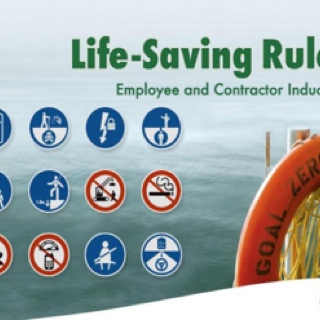Information
-
Document No.
-
Audit Title
-
Client / Site
-
Conducted on
-
Prepared by
-
Location
-
Personnel
Notes for Site Visits conducted as required by Project HSSE Plan Team Leader is responsible for report generation and submission Site Host is given direct feedback of visit outcomes before visiting team leaves the site MFV Leader agrees "SMART" actions with site host Host holds responsibility to follow up on agreed actions. Visit reports are recorded on site visit template only (this record) All completed site visit reports to be sent to the Project HSSE Coordinator for filing in Livelink - clearly handwritten reports are acceptable for submission. Visit record not marked as completed (Green) until visit report is submitted. Next MFV team uses past reports for part of their visit, following up on completions of previous actions.
-
A competent person has carried out inspections of fall protection equipment and ladders before they are used.
-
Everyone working at height can demonstrate they have been trained before using or installing fall protection equipment.<br>
-
A fall protection plan is in place prior to working at height and emergency response procedures have been tested with drills to ensure effectiveness.<br>
-
Chain and rope ladders are not used unless all other means of accessing the work are not possible or impose a greater safety risk.
-
Fall arresting systems consist of a full body harness, a personal dual self retracting line (SRL)/personal fall limiter (PFL) for any fall potential, or double lanyard with a single shock absorber for fall potentials greater than 5.18 meters (or 17 feet) or other approved fall protection equipment. All must have compatible, manufacture approved accessories and suspension trauma straps. Fall arrest equipment must have a certification test done by an authorised body and be inspected by the user on a daily basis.
-
100% tie off is in place at all times when people are working outside a protected area or when anyone is exposed to a fall of greater than 1.8m (6 feet) or working near holes and openings (i.e. gaps or openings due to work activities).
-
The anchorage or tie off point is above the work activity level with the only exception during scaffolding erection works.
-
Lanyards/ SRL’s are attached to an anchorage that can hold 2,268kg (5,000lbs) and is approved as a tie-off point.
-
Tool lanyards, tool pouches, netting materials and other small object control measures are used to manage dropped objects.
-
Dropped object zones are barricaded off with danger tape and tags that list the responsible person, date and hazards that require the barrier.
-
Open holes that have been made into floors or platforms have covers that are secured, can hold twice the expected load and are labelled “Hole Cover”. Where a hole cannot be completely covered a hard barricade is in place around the hole and anyone entering the exposed hole area must tie off.
-
Scaffolds, mobile work platforms and equipment for lifting people meet internationally recognised standards.














